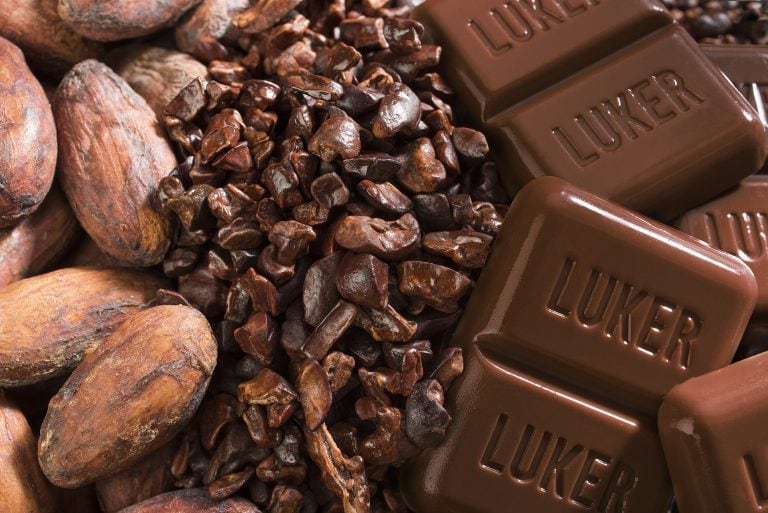In the confectionery space, indulgence no longer means consuming decadent or calorific treats; healthy indulgence can be found in enjoying a diverse selection of free-from chocolates or candies with fresh flavors and healthy ingredients that appeal to all the senses in a single bite.
According to the Innova Database, three in five global consumers want to try new sensory experiences such as aromas, tastes, textures, and colors. Moreover, consumers are also increasingly looking for sustainable and healthy products.
Wanlin Koh, Regional Technical Manager at ingredients group IMCD, said: "Indulgence claims around texture and flavor are gaining popularity. Indulgence has expanded beyond merely stronger flavors. Bolder and more exciting flavor choices are now available. For example, ingredients with botanical flavors, such as spices, herbs, and seeds, are combined with conventional fruit flavors and tea elements in the beverage area. The texture is also being emphasized in premium product positioning. Brands know how words and descriptions can reinforce new textural experiences."
Consumption behaviors
The chocolate, confectionery, and bakery industry has adapted to demands for more healthy sweet treats, but the cost-of-living crisis is also altering consumers' purchasing and consumption behaviors.
Regulatory changes in Europe over the past few years – such as HFSS (high in fat, sugar, and sodium), Nutri-Score, Natasha’s Law, acrylamide restrictions, and mandatory fortification of flour, for example – have also changed the bakery landscape.
“This all leaves a major question mark around the role of indulgence in the category as people look to save money and focus on health,” Lin Peterse, category development manager for Bakery at Tate & Lyle, told our sister title bakeryandsnacks.com.
“Our consumer insights report – What’s driving growth in the European bakery market – revealed that almost half of young people in Europe are buying bakery products every day, which reveals that there are significant growth opportunities in the bakery sector,” she added.
Consumers are undoubtedly focused on a holistic approach to health and how food can help both body and mind. “Which means there’s an opportunity for manufacturers to review some of their formulations to attract consumers and keep existing customers,” said Peterse.
In collaboration with Coleman Parkes, Tate & Lyle tapped 1,250 European adults (in the UK, France, Germany, Spain, and Poland) in late 2022 to discover what was top of mind in shaping their habits regarding sweet and savory baked treats.
“We discovered that instore promotions ranked as the biggest influence on buying decisions in the UK when it comes to bakery products, ahead of adverts and recommendations from friends and family,” said Peterse.
Consumers ranked indulgence among their top three priorities when it comes to pastries, cakes, and biscuits.
Reformulation
“This is something we’ve considered at Tate & Lyle, working with several manufacturers to reformulate their recipes to avoid being categorized as HFSS,” said Peterse, noting the company’s technical toolbox is a great resource to help reformulate to achieve a great taste profile with less sugar, fat or salt. “Ultimately, bakers’ product ranges must deliver on both value and health while also providing more premium and indulgent treats.”
Any reformulation project is a complex balancing act to ensure the product is healthier while maintaining quality. For example, switching out a large quantity of sugar requires adding something else to preserve texture and mouthfeel.
“Where clean label once centered around the absence of ingredients perceived to be artificial, it has evolved to encompass free from claims and descriptions highlighting natural and sustainable ingredients,” said Peterse.
‘Our Planet, Our Health'
A spokesperson from BENEO, said the popular theme from the past couple of years, ‘Our Planet, Our Health,’ broadens the usual notions of health to encompass the environment — putting a spotlight on the innate relationship between the Earth’s wellbeing and our own.
“When it comes to our own welfare, having proper nutrition is key to addressing the region's myriad of health challenges. Within Europe, the population struggles with non-communicable diseases (NCDs) such as diabetes, with 1 in 10 adults currently living with the condition. A rapidly aging population is another long-standing issue that further contributes to the need to promote healthy living, particularly as one’s immunity declines with age.
“Increasingly, we are seeing consumers recognize nutrition's critical role in staying healthy. Keeping fit and active and having a balanced diet have all been significant concerns during the pandemic, and 2 in 3 consumers now see a healthy diet as key to controlling their future health.
“This also includes the growing awareness that carbohydrates differ in quality. For example, incorporating functional ingredients like the slow-release carbohydrate Palatinose can help manage blood glucose levels, lowering the risk of developing Type II diabetes.
“Besides our own wellbeing, consumers have also started paying more attention to sustainability, recognising the intrinsic link between our health and that of our planet. Environmental concerns were heightened because of COVID-19, with 60% of consumers now more attentive to the impact their food and drink consumption has on the environment.
“This is also driving the growth of plant-based foods, with almost half of the consumers across the globe being interested in this type of diet. Manufacturers can embrace the plant-based momentum by using proteins from plant sources to create meat- and dairy-free products that are more nutritional and retain a similar taste and texture to the original.”



